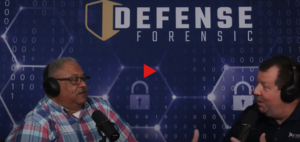In the digital age, social media platforms have become an integral part of our lives, connecting billions of people across the globe. These platforms enable us to share our thoughts, experiences, and personal information. However, they also serve as virtual treasure troves of valuable evidence in various civil and criminal investigations. Social media forensics, the art of analyzing posts, messages, friend lists, and user profiles, has emerged as a powerful tool to unravel crucial information related to cybercrimes and civil cases. This article explores the world of social media forensics, providing insights into its methodologies, challenges, and real-world case examples.
I. Understanding Social Media Forensics
Social media forensics refers to the process of extracting and analyzing digital evidence from social media platforms to support legal investigations. It involves examining various elements, such as posts, messages, friend lists, user profiles, and metadata, to uncover valuable information that can aid in solving crimes, verifying alibis, or establishing a person’s credibility.
A. Methodologies in Social Media Forensics
1. Open-Source Intelligence (OSINT): OSINT is a key methodology used in social media forensics. It involves gathering publicly available information from social media platforms, online forums, and other digital sources. Investigators employ advanced search techniques and tools to collect data, including posts, comments, and shared media.
2. Metadata Analysis: Metadata, such as timestamps, geolocation, and device information, play a crucial role in social media forensics. Examining metadata can help establish the authenticity and integrity of digital evidence, as well as provide valuable insights into the context and timeline of events.
B. Challenges in Social Media Forensics
While social media forensics offers great potential, it also presents challenges that investigators must overcome:
1. Privacy and Legal Concerns: Balancing the need for digital evidence with individual privacy rights is a delicate task. Investigators must adhere to legal and ethical guidelines to ensure the admissibility of evidence in court and protect the privacy of individuals.
2. Data Volume and Complexity: Social media platforms generate an enormous volume of data, making it challenging to identify and analyze relevant information efficiently. Investigators must employ specialized tools and techniques to navigate through vast datasets.
II. Social Media Forensics in Action: Real-World Case Examples
A. The Facebook Murder Case
In 2017, a disturbing incident known as the Facebook Murder shocked the world. Steve Stephens live-streamed himself on Facebook, committing a heinous murder. Social media forensics played a crucial role in tracking down Stephens and bringing him to justice. Investigators meticulously analyzed his social media activity, examining posts, messages, and location metadata, which ultimately led to his arrest.
Citation: “Manhunt for Facebook murder suspect Steve Stephens ends in suicide.” CNN, 18 April 2017.
B. Twitter as a Tool for Threats
Social media platforms, including Twitter, are often exploited by individuals seeking to make threats or incite violence. In 2018, a Twitter user posted a series of threats against a school, causing widespread panic. Social media forensics experts swiftly analyzed the user’s account, identified key information, and collaborated with law enforcement to apprehend the individual responsible.
Citation: “Florida woman charged with making threats against Sandy Hook parent.” CNN, 5 June 2018.
C. Cyberbullying and the Amanda Todd Case
The tragic case of Amanda Todd, a Canadian teenager who took her own life in 2012 after suffering from cyberbullying, highlights the impact of social media on vulnerable individuals. Social media forensics played a crucial role in uncovering the identities of the individuals responsible for tormenting Amanda online. Investigators meticulously analyzed social media profiles, messages, and metadata to build a case against the perpetrators.
Citation: “Amanda Todd: Bullied Canadian teen commits suicide.” BBC News, 12 October 2012.
III. Social Media Forensics Best Practices
A. Preserve and Document Evidence
To ensure the admissibility of social media evidence in court, investigators must follow strict protocols for preserving and documenting digital evidence. This includes capturing screenshots, recording metadata, and maintaining a clear chain of custody.
B. Employ Advanced Analytics Tools
Given the vast amount of data generated on social media platforms, investigators must leverage advanced analytics tools to streamline the analysis process. These tools can help identify patterns, uncover hidden connections, and filter out irrelevant data, expediting investigations.
C. Collaborate with Digital Forensics Experts
Social media forensics often intersects with other areas of digital forensics. Collaborating with experts in computer forensics, network forensics, and mobile forensics can provide additional insights and strengthen the overall investigation process.
Social media forensics has revolutionized the way investigations are conducted, allowing law enforcement agencies, legal professionals, and cybersecurity experts to crack the code of social media platforms. By analyzing posts, messages, friend lists, and user profiles, investigators can expose crucial information related to cybercrimes and civil cases. The real-world case examples discussed in this article highlight the pivotal role that social media forensics plays in solving crimes, protecting individuals, and ensuring justice in the digital age. As technology continues to evolve, social media forensics will undoubtedly play an increasingly significant role in combating cybercrimes and shedding light on complex legal matters.





